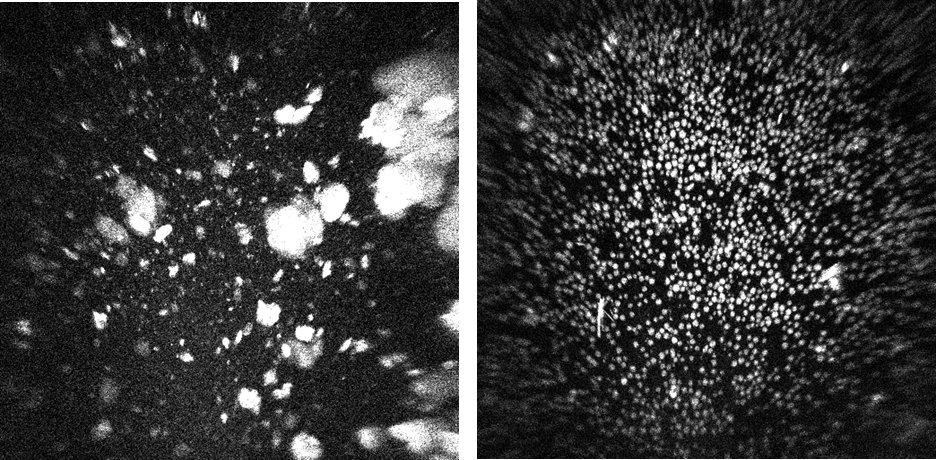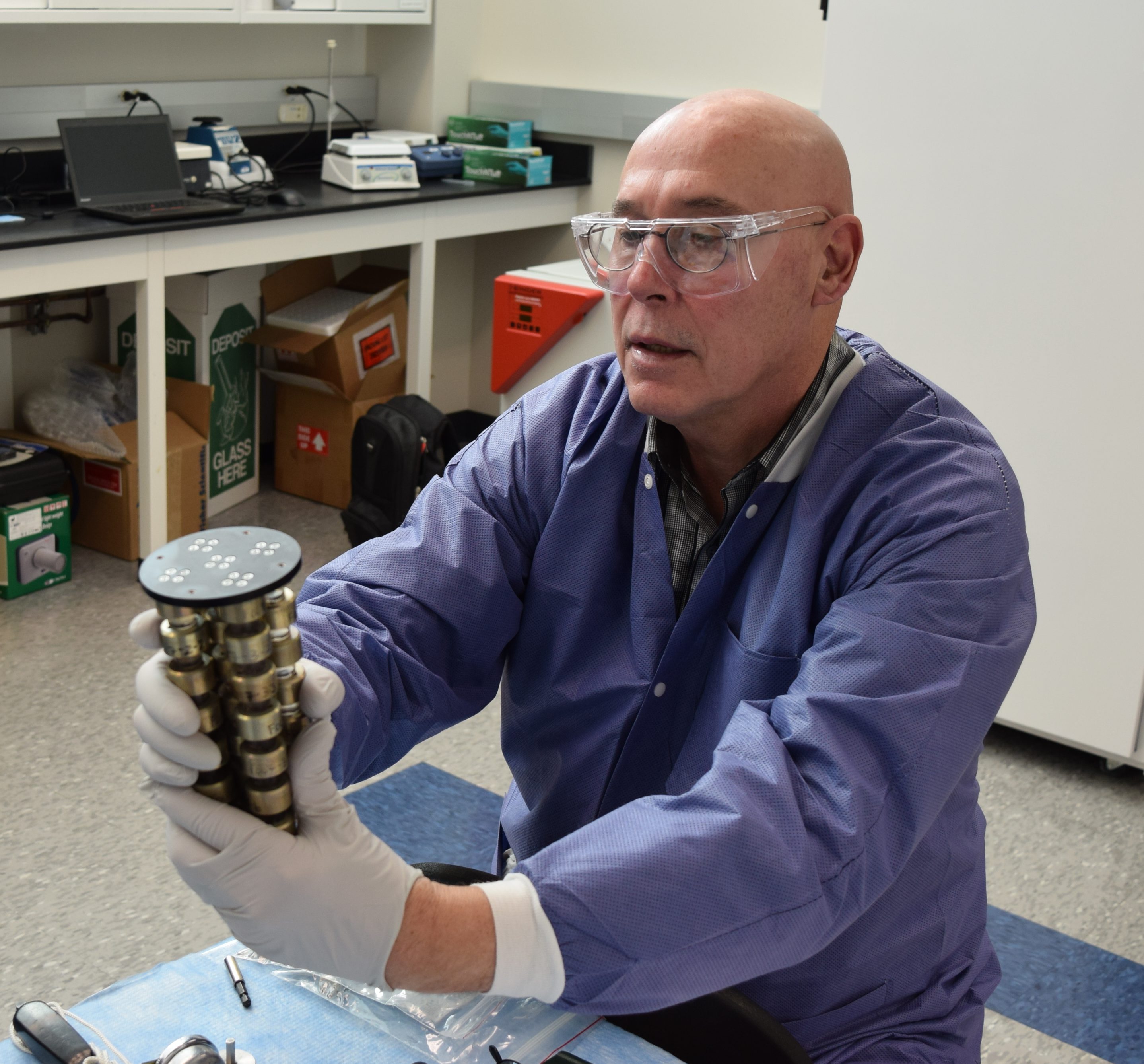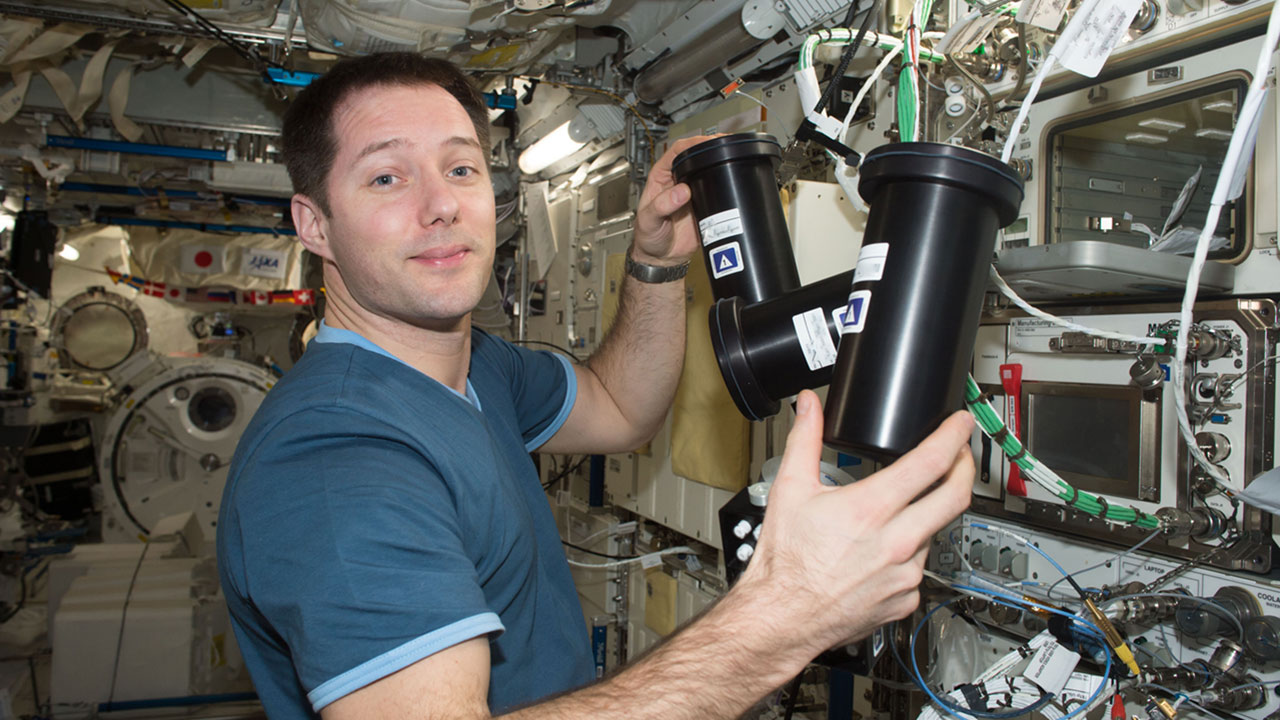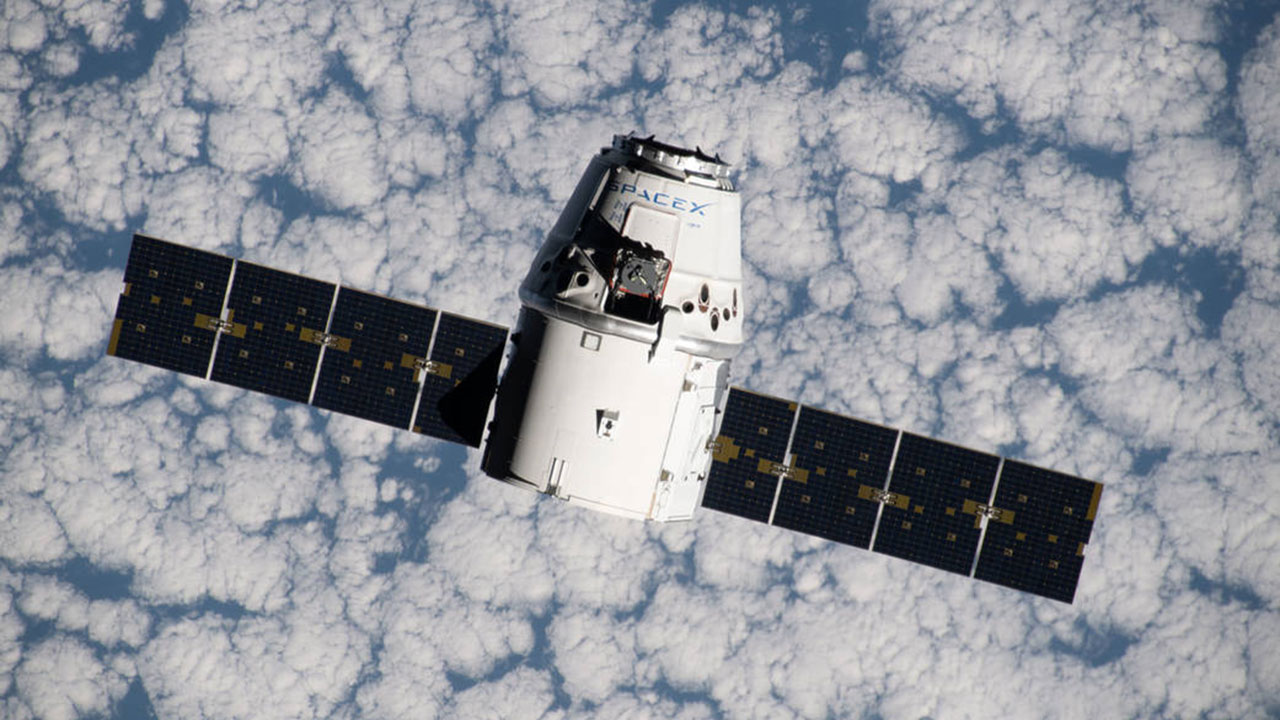At a Glance
- Results from an ISS National Lab investigation led by researchers from Merck Research Laboratories were published in the journal Nature Microgravity.
- The investigation leveraged microgravity to identify key variables in the crystallization of Merck & Co.’s pembrolizumab, the active pharmaceutical agent in the immuno-oncology drug Keytruda®.
- Results from this project could lead to improvements in the manufacture, storage, and delivery of pembrolizumab, which could reduce costs and improve patient quality of life.
- The Merck research team was able to produce highly uniform, stable concentrated crystalline suspensions of pembrolizumab on the ISS National Lab and successfully translated their findings to ground-based drug processes.
Today, a team of investigators from Merck Research Laboratories, led by Principal Investigator Paul Reichert, published results in the journal Nature Microgravity from their crystallization research on the International Space Station (ISS) U.S. National Laboratory. The team leveraged microgravity conditions to identify key variables in the crystallization of Merck & Co.’s therapeutic monoclonal antibody (mAb) pembrolizumab, which is used to treat several types of cancer. Results could lead to improvements in the manufacture, storage, and delivery of the drug, which could reduce costs and improve patient quality of life.
By crystallizing pembrolizumab in microgravity, where sedimentation and convection currents are minimized, Merck researchers were able to identify conditions producing crystalline suspensions of homogenous monomodal particle size and distribution. In addition, the crystalline suspensions produced in microgravity had lower viscosity and were more uniform than ground-based controls.
The Merck research team was able to apply the results of their spaceflight experiment to ground-based processes for pembrolizumab production to yield uniform crystalline suspensions with properties that could enable drug delivery via a subcutaneous injection, rather than the current intravenous delivery. The ground-based production of uniform crystalline suspensions also has important implications for drug purification and storage of therapeutic mAbs such as pembrolizumab.

UV imaging of a ground control sample (left) and spaceflight sample (right) from Merck's investigation, clearly showing the much more uniform size and distribution of crystals grown in microgravity.
Media Credit: Image courtesy of Merck
Identifying Crystallization Processes for Monoclonal Antibodies
The therapeutic mAb Keytruda® (pembrolizumab) is approved by the U.S. Food and Drug Administration (FDA) for the treatment of multiple types of cancer. In recent years, increasing numbers of mAb therapeutics are being used to treat not just cancer but also cardiovascular, metabolic, and neurological diseases.
However, the current manufacturing process to produce mAb therapeutics is complex, and purification involves multiple chromatographic steps—a process that is expensive and time consuming. Additionally, the final formulation of mAbs requires refrigeration, which limits drug shelf life and impacts costs. Furthermore, the typical delivery method for mAb therapeutics is through intravenous infusion in a hospital setting that takes hours and often requires a surgically implanted subcutaneous port.
The ability to produce a highly uniform, stable concentrated crystalline suspension of mAbs could address each of these issues. Crystallization would enable a quicker and less expensive purification process, and a drug product that could be reformulated at room temperature would not only reduce production costs but would also be beneficial in areas of the world with limited refrigeration. In addition, crystallization would enable the production of a more concentrated, less viscous drug product that could be given as a subcutaneous injection at a local doctor’s office on a less frequent dosing schedule, improving quality of life for patients and caregivers.
Crystallization processes are commonly used in the manufacture of small molecule and small protein therapeutics. However, it has been challenging to identify optimal crystallization processes for biologic drugs such as mAbs due to their large size and the flexibility of their structure.
In microgravity, sedimentation and convection currents are reduced, enabling higher-quality and more uniform crystallization. Merck previously conducted crystal growth studies on the drug alfa interferon on 12 space shuttle missions that yielded high-quality crystalline suspensions containing particles with uniform size and distribution. Based on the results of these previous studies, Merck sought to leverage microgravity conditions on the ISS National Lab to examine the production of crystalline suspensions of mAbs.
Producing Uniform Crystalline Suspensions in Space and on Earth
Merck’s investigation, which launched to the ISS on SpaceX’s tenth commercial resupply services mission in February 2017, was aimed at understanding the key variables that affect mAb crystallization and identifying conditions for improved crystallization of pembrolizumab.

Paul Reichert preparing the Protein Crystallization Facility hardware prior to launch on SpaceX CRS-10.
Consistent with previous findings on alpha interferon from Merck’s space shuttle studies, the company’s ISS National Lab experiment resulted in homogenous monomodal populations of mAb crystalline particles. In contrast, ground control experiments yielded crystalline suspensions with a heterogeneous bimodal particle size and distribution. Additionally, the concentrated crystalline suspensions produced in the spaceflight experiment were more uniformly sedimented and less viscous than comparable ground controls—which is important in formulating pembrolizumab as a subcutaneous injection to ensure the proper flow of the drug through a syringe.
Through their ISS National Lab investigation, Merck researchers identified sedimentation and temperature gradients as playing a key role in the production of uniform crystalline suspensions of pembrolizumab and applied these findings to processes back on Earth. Using rotational mixers to reduce sedimentation and temperature gradients to induce nucleation and control crystallization, the research team successfully reproduced homogeneous crystalline suspensions in ground-based experiments.
Not only could these findings improve the manufacture, storage, and delivery of pembrolizumab, they could also lead to important advancements in other mAb drugs to treat a wide variety of conditions affecting people on Earth.
Learn more about Merck’s ISS National Lab investigation in the Upward feature “Reshaping Drug Delivery Millions of Crystals at a Time.”
Molecular Crystal Growth Research Opportunities on the ISS National Lab
An ISS National Lab Request for Proposals (RFP) in the area of Industrial Biomedicine, which includes molecular crystal growth, is currently open: Industrial Biomedicine Research and Development Onboard the ISS National Laboratory. Learn more about the ISS National Lab proposal submission process here.
To establish sustainable platforms in low Earth orbit for ongoing crystallization research, the ISS National Lab aims to provide opportunities for crystallization investigations on every cargo resupply launch to the ISS, a rapid turnaround of samples, and hardware options to minimize preflight optimization steps. For more information on microgravity molecular crystal growth (MMCG), see the ISS National Lab MMCG overview.






